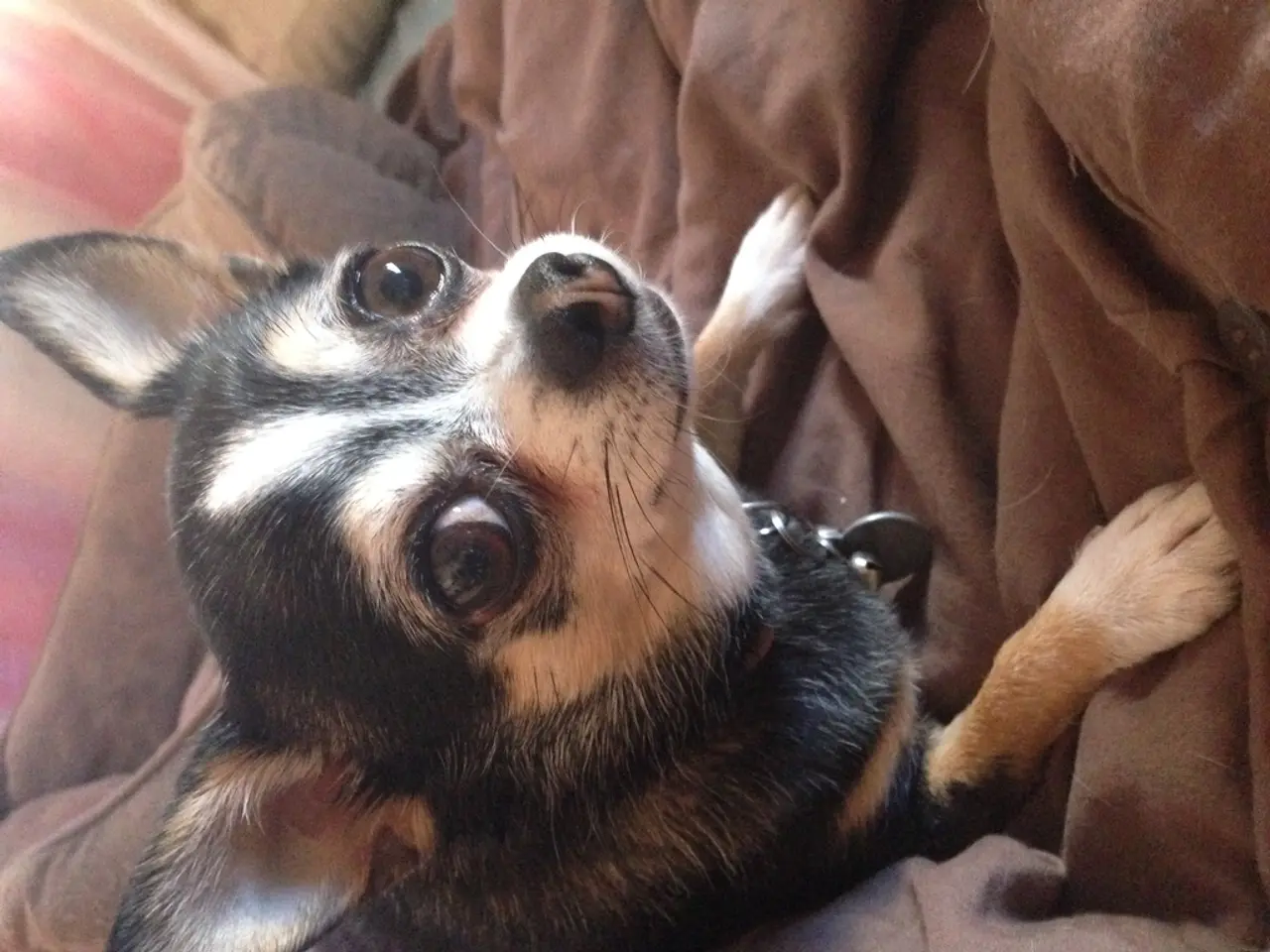Veterinarian provides solutions for five frequent dog behavior issues related to aggression
In the world of canine companionship, aggression can sometimes rear its head, causing concern for owners and potentially posing a risk to both dogs and humans. To better understand and address this issue, it's essential to recognise the common causes of canine aggression. Dr. Catherine Barnette has identified five general causes: fear, possessiveness, frustration, dominance, and pain/illness.
Fear aggression arises when a dog feels trapped in a fear-inducing situation. This can be triggered by loud noises, unfamiliar surroundings, or even the presence of strangers. To manage fear aggression, it's crucial to provide a safe and secure environment for your dog, allowing them to acclimate gradually to new situations.
Possessive behavior can trigger aggression if a dog feels strongly about protecting their belongings or family members. This type of aggression is often displayed when a dog is guarding food, toys, or even its favourite resting spot. Ignoring your dog when it barks can help stop attention-seeking barking associated with possessiveness.
Frustration can cause aggression in dogs, such as when a dog is left chained up outside all day. To prevent frustration-induced aggression, ensure your dog receives adequate exercise, mental stimulation, and social interaction.
Dominance aggression occurs when a dog feels that their role in the social hierarchy is being challenged. This type of aggression is often seen in multi-dog households, where dogs may compete for dominance. To address dominance aggression, it's important to establish clear boundaries and consistency in training.
Aggression caused by pain or illness is easy to understand, as dogs can become short-tempered when they are in pain or unwell. If you suspect your dog is experiencing pain or illness, consult your vet immediately.
Territorial or alarm barking in dogs can be managed by limiting their ability to see what's going on outside. This can be achieved by closing curtains or blinds, or by moving your dog to a quieter part of the house.
For dogs that show aggression on walks, it's recommended to invest in a dog harness for pulling and use treats and other training methods to manage dog aggression on walks. In more severe cases, professional help may be necessary.
Aggression between housemates is an emergency and requires immediate separation of the dogs. Consult your vet about a referral to a veterinary behaviorist for help with interdog aggression.
To help manage aggression, it's important to provide your dog with positive reinforcement and rewards for good behaviour. This can be achieved through the use of treats, such as those made with real chicken and packed in a resealable pouch. These treats are soft and easy for pups to tear into, making them an ideal reward for good behaviour.
In conclusion, understanding the common causes of canine aggression can provide a framework for thinking about aggression problems in dogs. By recognising these causes and implementing targeted behavior modification, consistent training, socialization, environmental management, and, if necessary, professional intervention, you can help your dog overcome aggression and live a happier, healthier life.







